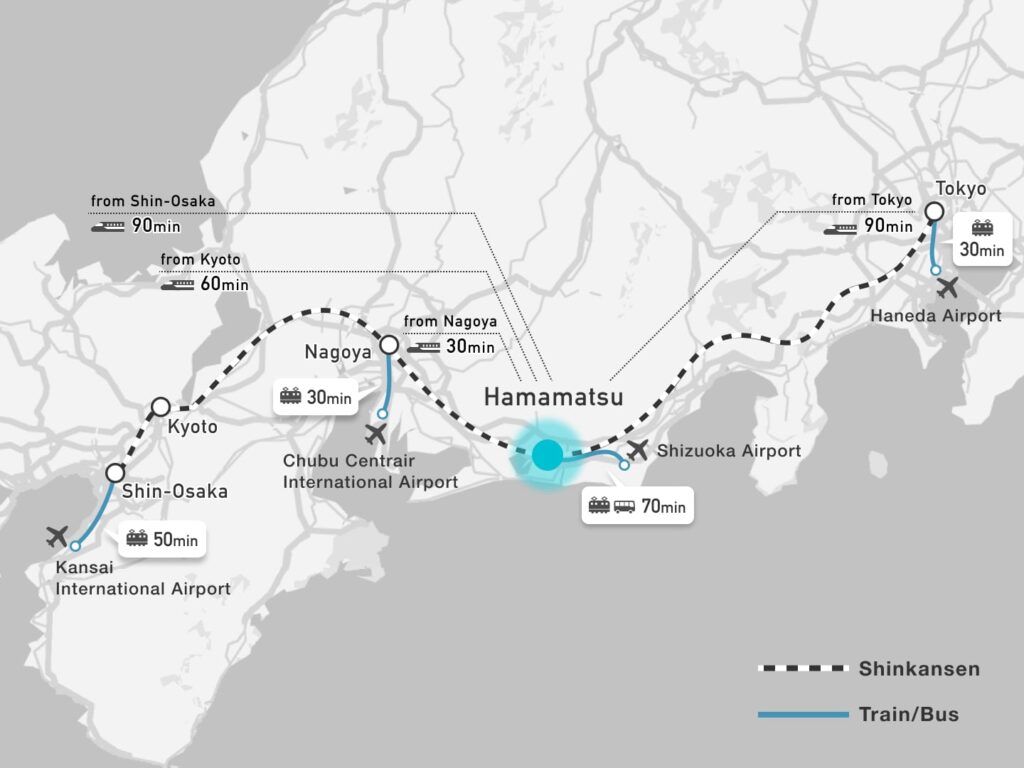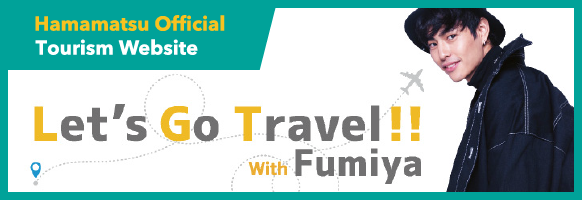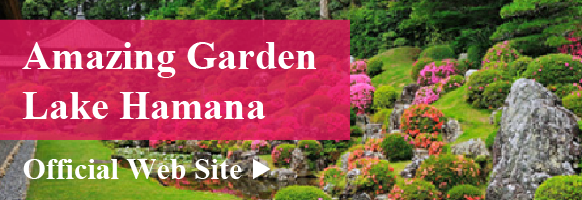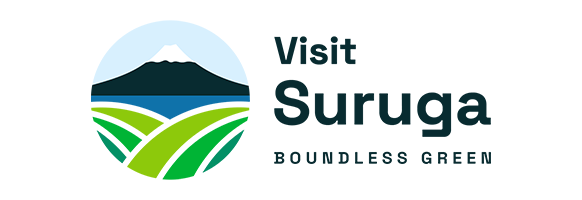Get to Know Hamamatsu
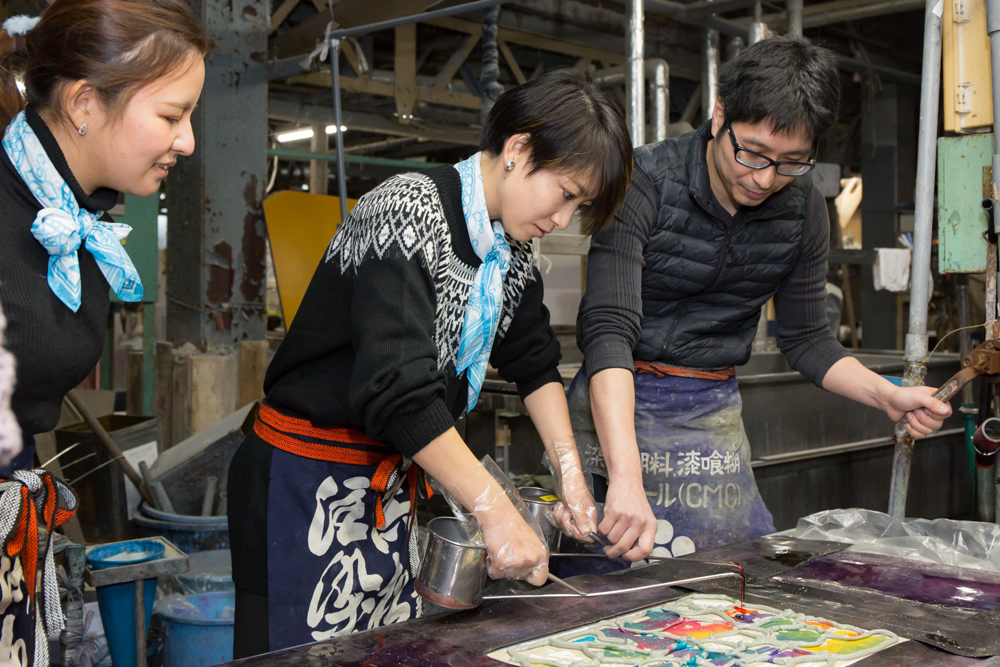
- Watch
Experience Hamamatsu’s Trending Traditional Craft: Chusen Dyeing!
We tried Hamamatsu’s traditional Chusen dyeing technique. Experiencing it makes you want to help keep this amazing craft alive. It’s a valuable cultural experience unique to Japan…
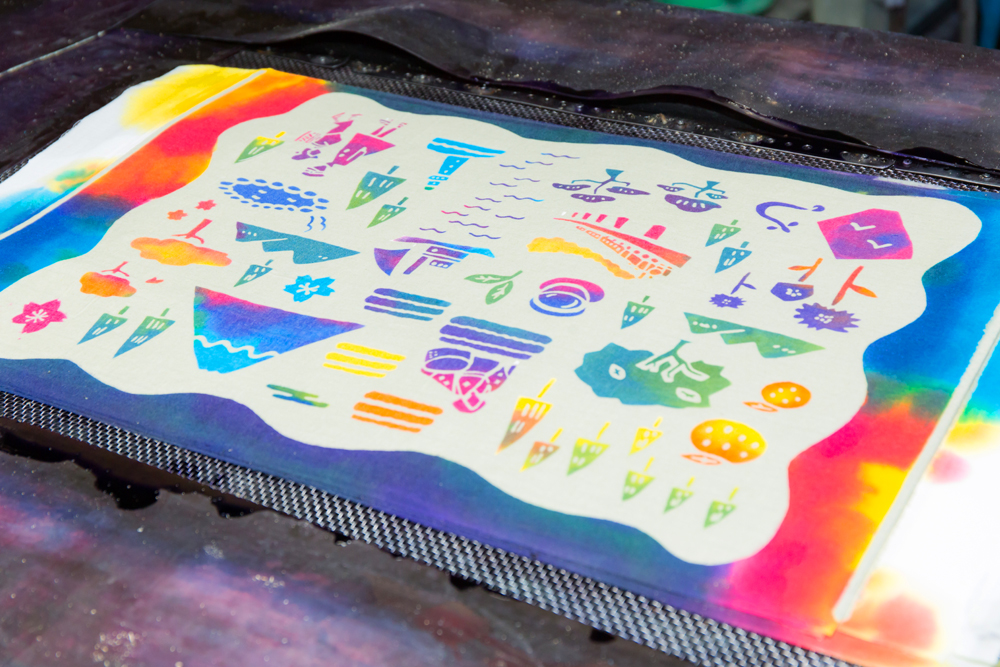
On this day, Jenne came to the Nihashi Dye Factory in Tokiwa-cho, Chuo-ku, Hamamatsu City. I came here to experience the traditional technique of Hamamatsu chusensome. Have you ever heard of “chusensome”? For those who grew up in Hamamatsu, I want them to imagine the tenugui of the Hamamatsu Festival held every year during Golden Week. Tenugui with kite stamps from each town are dyed using a technique called chusensome.
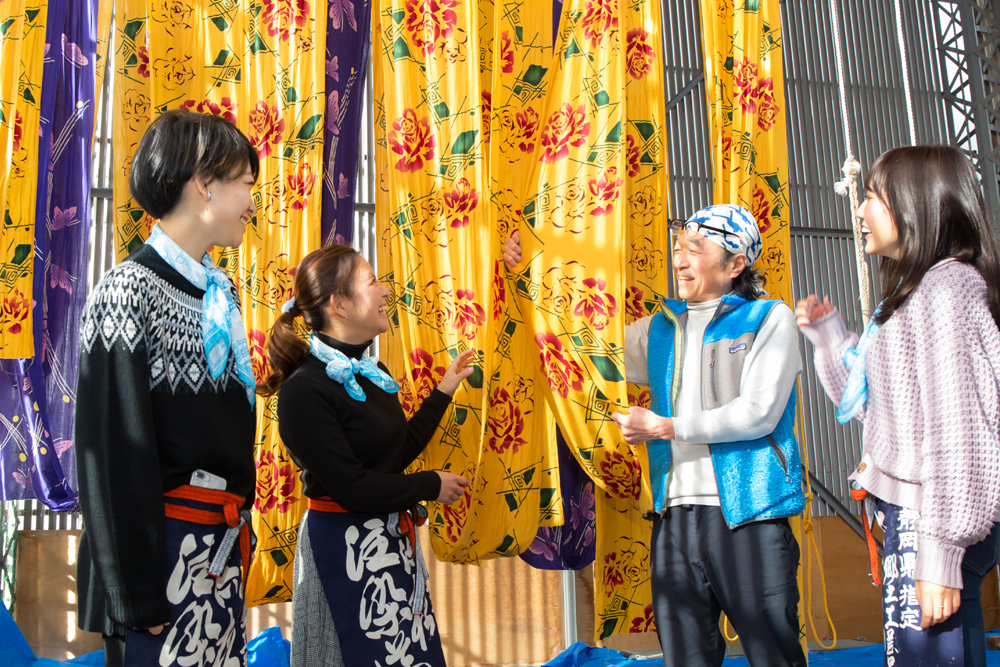
The characteristic of this chusensome is that it has good breathability. Hamamatsu is a major producer of yukata, accounting for about half of the domestic market. If you have ever worn a Hamamatsu chusensome yukata, you will know that it is very comfortable to wear. It is also hand-washable and can be worn multiple times in one season. Another major feature of the production process is that multiple pieces can be dyed using a single pattern.
It is said that Hamamatsu’s chusensome began in the Taisho era. Hamamatsu, with its strong winds, was probably suitable for producing yukata. After the war, the textile industry flourished, and for a time it became known as the “Itohen Town,” but it declined over time. However, we are conducting this experience with the hope that young people will also learn about this traditional technique that has been passed down to this day.
The experience started right away

I immediately entered the factory and put on my apron. I feel like a complete craftsman now. First, I had the opportunity to experience the first step, “gluing”. Place the pattern on the fabric and use a large wooden spatula to spread the glue all over. After that, the fabric is folded over several times and the process of applying the glue is repeated, and the craftsmen apply the glue using simple techniques. Now, it’s Jenne’s turn. She uses a wooden spatula to scoop out the glue from the glue pot and applies it onto the fabric with an unusually serious expression on her face. “Ah! It’s so difficult!!” It’s strange that I can’t apply it evenly. Still, I worked hard and finished applying the glue. The wooden spoon is so heavy that my arm is already starting to cramp.
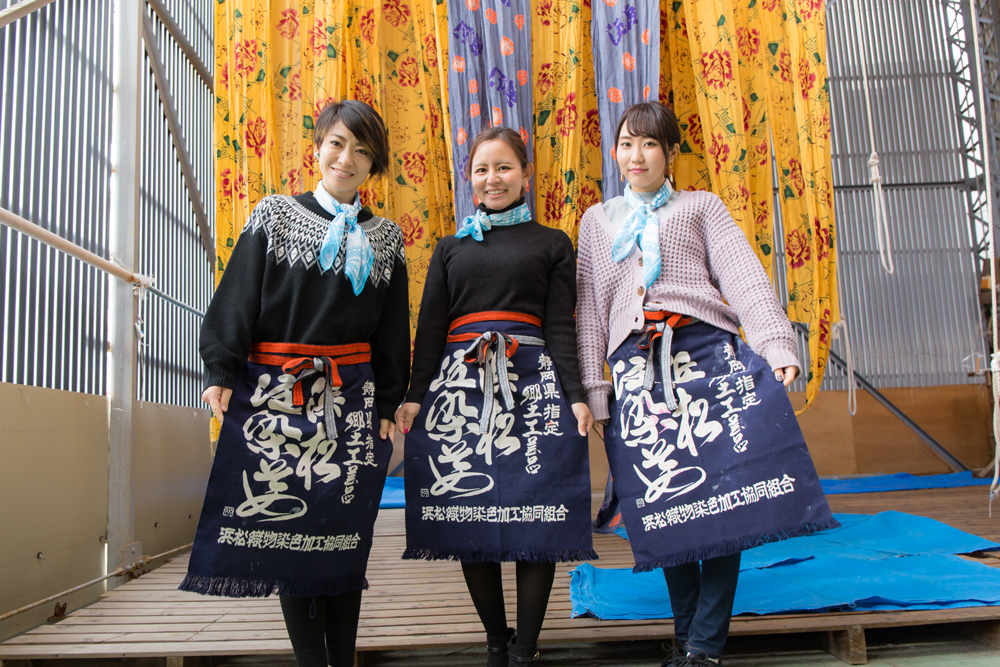
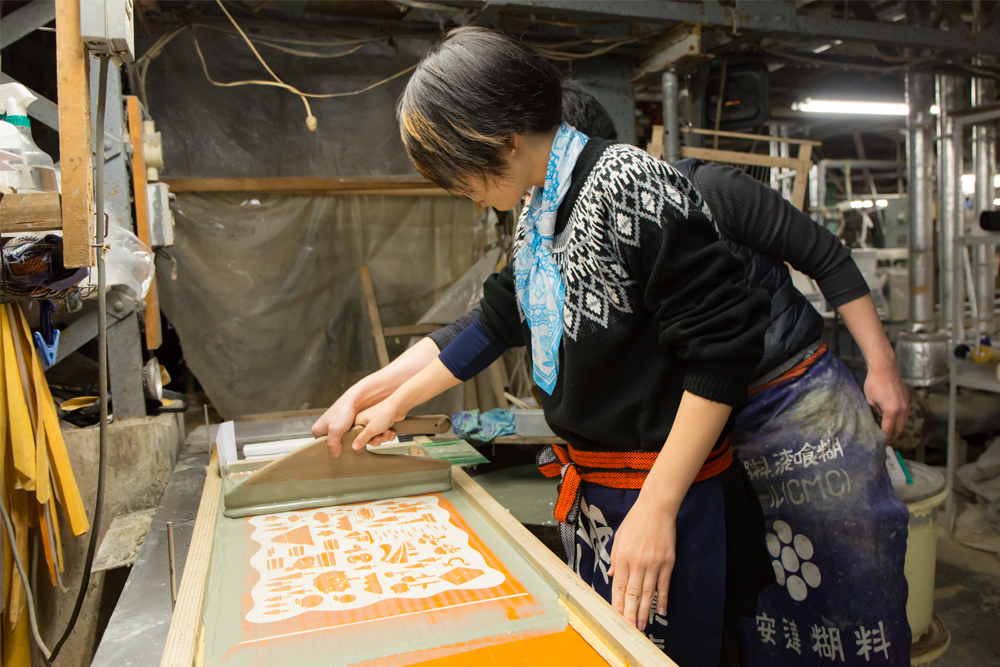
Next, we had the opportunity to experience “bank construction” and “sosogisome”. Create a bank on the fabric coated with glue to prevent the colors from mixing. It’s like decorating a cake. They seem to be having fun drawing the banks, but this also requires a lot of effort. The fabric is then dyed using a long-necked kettle filled with dye, and the dye that reaches the bottom is sucked up from underneath the fabric. The three of us took turns deciding what color to dye. It looks like the colorful tenugui will be completed. Finally, in order to create a gradation of two colors on the outer frame, one of the Jennes picked up two kettles and started pouring. It’s now a realm of art.


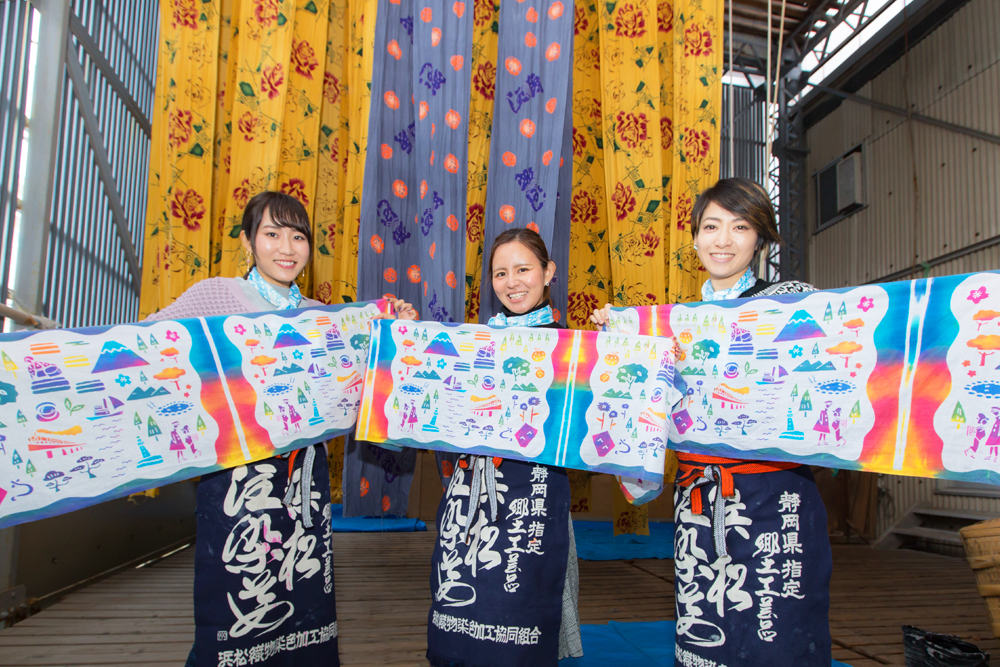
After that, they are washed by craftsmen, and then moved to a building with wooden poles over 5 meters high for drying in the sun. When you look down at the fabric that has already been dried, you will be captivated by the fluttering patterns of the fabric. Jenne’s colorful tenugui towels were also hung out to dry. It seems that the strong winds of Hamamatsu contribute to the creation of flexible fabrics. Enjoy the finished product and take a commemorative photo.

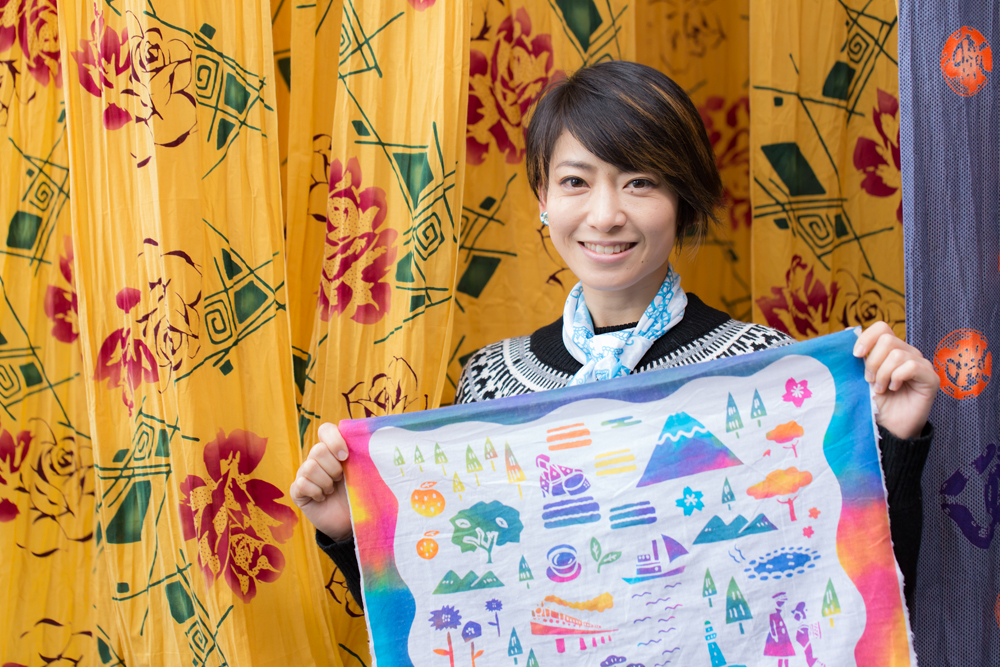
“It’s so cute!” Jenne and her friends were overjoyed when they saw the finished towels. In this experience, you will use a dryer to complete your tenugui on the spot so that you can take it home with you. Stamps depicting the chusen someme process are placed on the wrapping paper used to wrap the tenugui. Carefully fold the tenugui you made, wrap it in wrapping paper, and you’re done! I can’t help but smile.
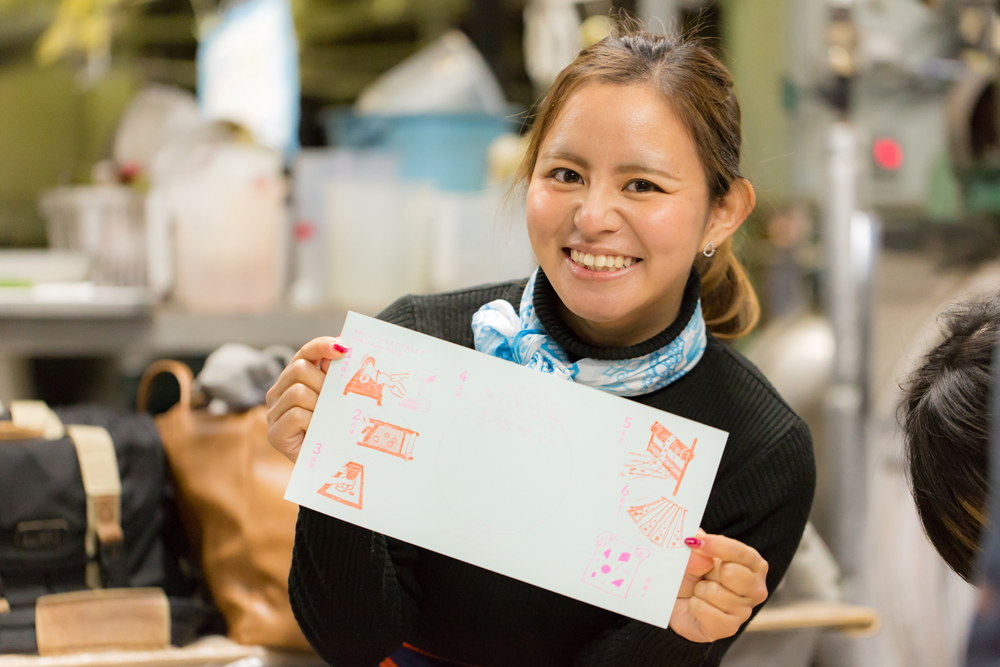
I thanked the craftsmen and went outside, only to find that they were also selling fabrics made by professional craftsmen. Apparently it can also be purchased. Here in Hamamatsu, such wonderful traditional techniques are still being passed down. I want to carry on this technique 10 or 20 years from now, and the more I experience it, the stronger my desire becomes. I think it would be great if those of us who live in Hamamatsu can first experience the industry that this region is proud of, and pass on that goodness.
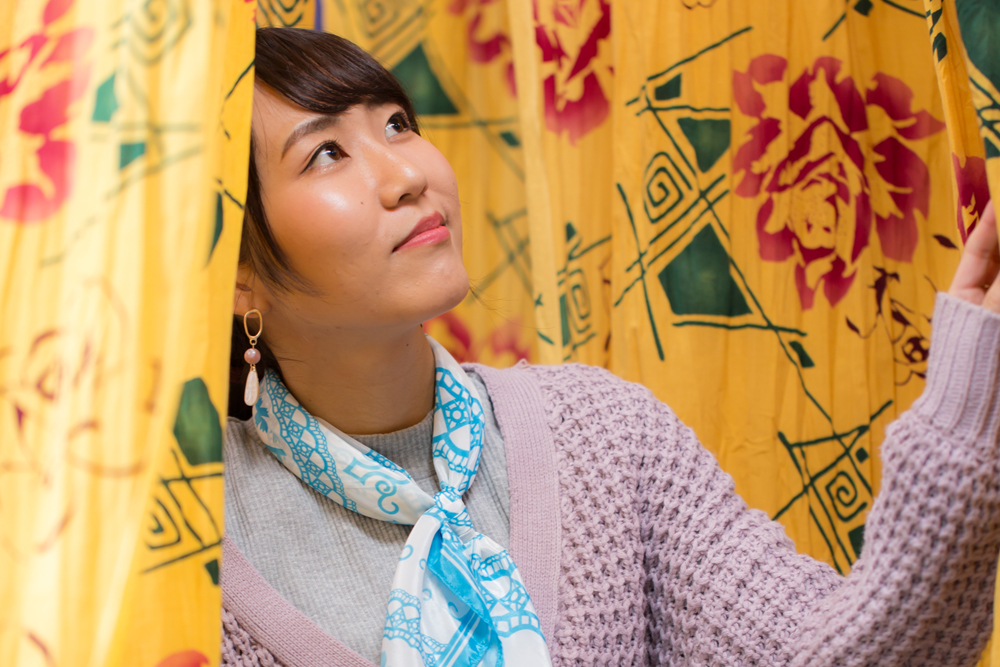
Click here for details about the Hamamatsu Chusen Someme experience↓
Link URL: Hamamatsu/Lake Hamana Yaramaika Tourism
https://hamamatsuat.hamamatsu-daisuki.net/experience/318/
Click here for the trial video (3:29~)
「https://www.youtube.com/watch?v=0uHFVegLp40&feature=youtu.be」
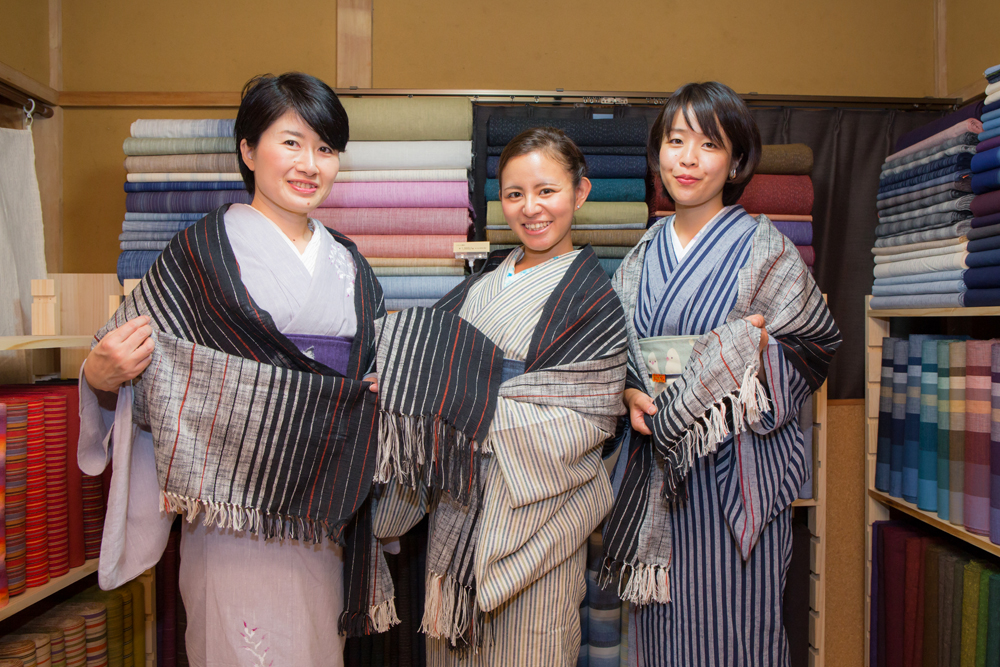
A Hands-On Weaving Journey with Traditional Enshu Cotton
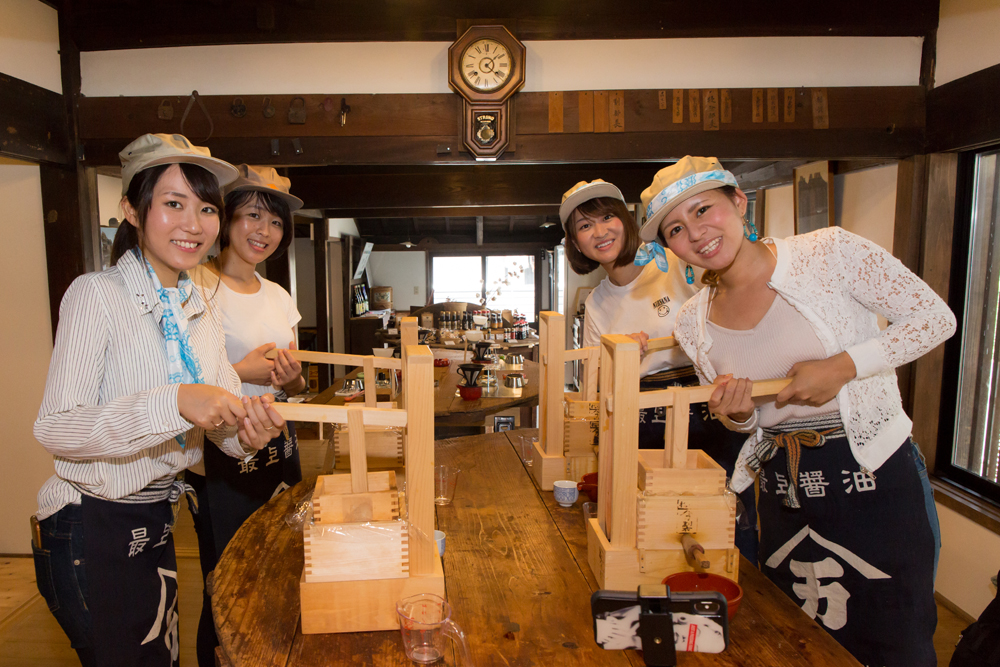
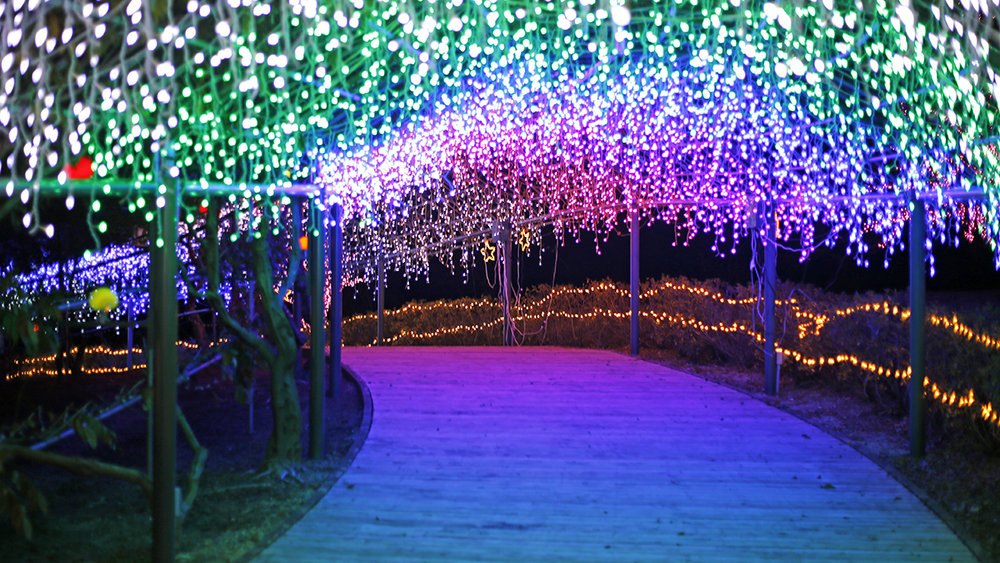
-1024x765.jpg)
